A few years ago I spent a year living in Strasbourg, France and was completely spoilt by the cycling commuter culture there. The city boasts over 560km of cycle paths which form the largest cycle network in France. It’s no surprise that everyone from toddlers attending the local nursery to the office workers in heels with smart briefcases would travel by bike. I can count on one hand the number of people I ever saw wearing a helmet and/or hi-vis. My hassle free rental bike – which came equipped with dynamo lights and a sturdy lock – cost me just €40 for the year.
Having come from this frankly idyllic set up, the prospect of cycling on UK roads was daunting to say the least. However, I’ve been commuting by bike 2 or 3 days a week for a year and it’s been one of the best changes I’ve made. Inspired by Love to Ride’s Ride to Work Week next week (25th – 31st March), I’ve compiled my ‘beginners-on-a-budget’ commuter kit check list.
With the days getting longer and warmer, now is the perfect time of year to commute by bike so I hope this encourages you to do the same.
Bike
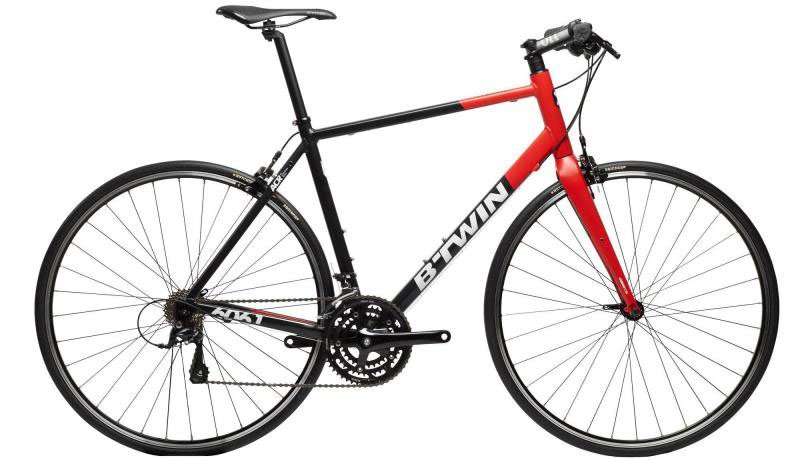
Cycle to Work schemes are a great option here, allowing you to start cycling straight away without any upfront costs. The payment is taken from your monthly salary (and you’ll save money in the long run, too) You can now get e-bikes on the scheme, so don’t worry if your commute is a hilly one.
For help choosing a bike, Road cc’s guide is a good place to start: the BTwin Hybrid Triban 520 won their Cycle to work scheme bike of the year (2018/2019).
Lights
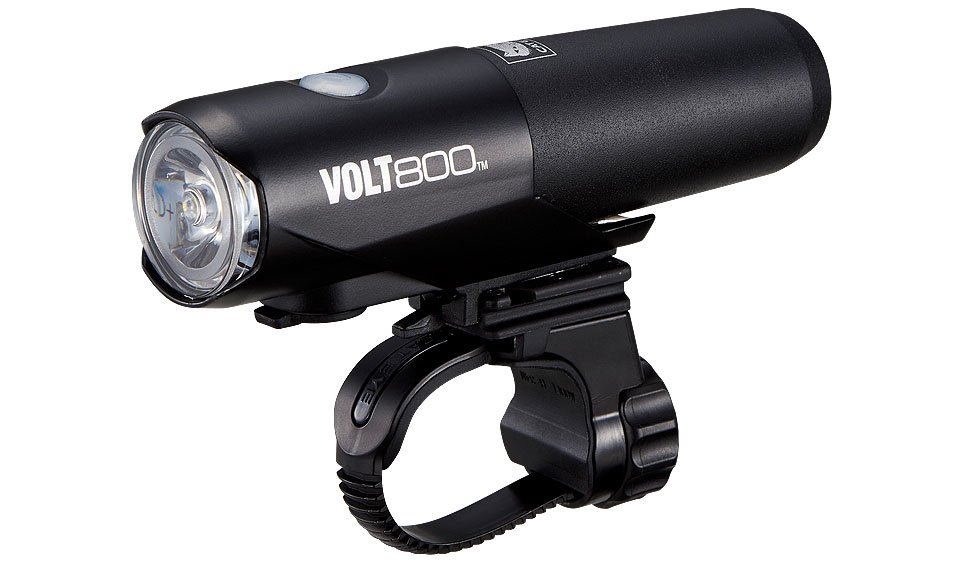
As much as this is a budget list, lights are not something you want to scrimp on. It’s as important for you to be able to see well as it is to be seen. It’s also a legal requirement to have your lights on after dusk. Look for lights that you can recharge via USB; you can just plug it in at your desk and won’t be left stranded for the journey home. My main light is this Cateye Volt 800 that lights the road up nicely.
Lights can be, broadly speaking, split into two categories: ‘be seen’ or ‘to see’. In urban areas, with street and ambient light, 400 volts is more than enough to be seen. Anything more and you run the risk of blinding other road users. If you need lights to illuminate your commute on unlit roads like me, you may need more (800+ volts). Just make sure they’re angled downwards so as not temporarily blind the oncoming drivers!
To make sure you’re never unexpectedly unlit, it’s definitely also worth having a backup set, which for me is this little pair from Cycle Republic.
Mud guard
I dislike a soggy bottom just as much as Mary Berry. Full mud guards – or even a plastic folding ass saver – will keep off the worst of the splatter from the road.
Helmet
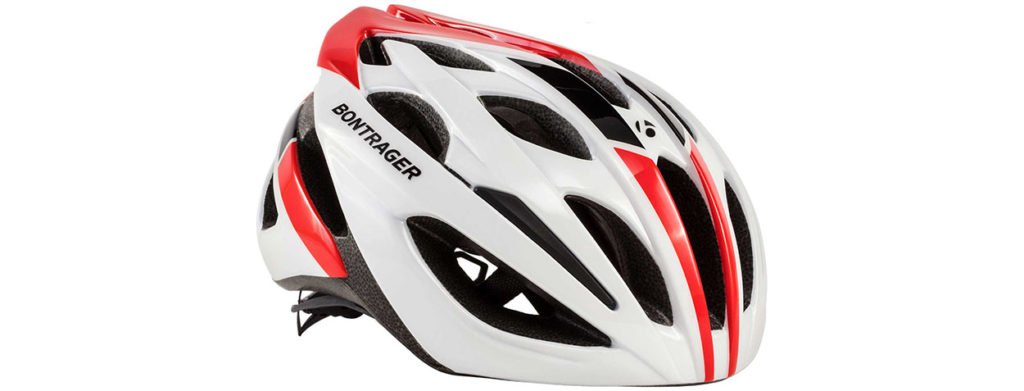
If you choose to wear a helmet, it needs to be comfortable and fit you correctly to have any benefit. The Bontrager Starvos MIPS was highly rated by Cycling Weekly for an entry level purchase. Just like your lights, this and other accessories can be bought on the Cycle to Work scheme.
Rucksack / panniers
This Ridge rucksack cover is only a tenner, so there’s no need to splash out on a whole new bag if you don’t want to. It’s kept my leather rucksack clean and dry for the office even in the worst weather. I find it easier to use a rucksack than panniers as I like to pack just about everything bar the kitchen sink. If you do opt for panniers, bear in mind that you will also need a pannier rack to attach them to, and they’re not compatible with all types of bike.
Clothing
Wear whatever you like. Personally I ride in some combination of gym kit because:
- It’s comfortable and designed to be sweated in
- I tend to wear skirts and dresses at the office which are not the easiest to cycle in (I have tried this only once, not a mistake I’ll be repeating)
- I already have it so it was no additional expense!
Because you can’t trust the British weather, you’ll want an outer layer that is breathable, waterproof and windproof in various combinations. I’m not going to get into the hi-vis debate here, just choose what works for you. This Provis nightrider kept me going through the winter but I’ll soon be moving to a more lightweight one for the spring, like this Dare2b.
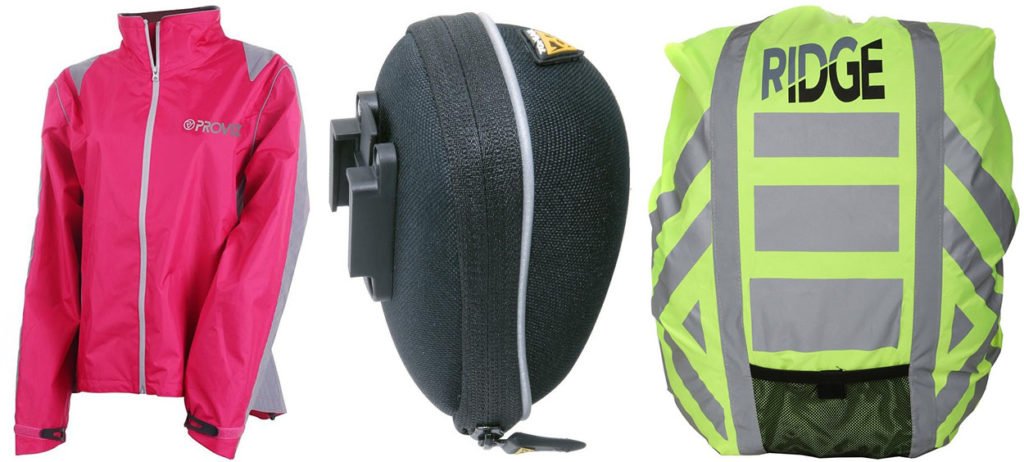
Saddle bag
Should you get stung with a puncture or broken chain, you need to be equipped to deal with it on the roadside. Stick a £20 note in your saddlebag for emergencies, too.
Lock
This is pretty crucial. Get the best quality lock you can afford with a confirmed Sold Secure rating, ideally gold. Wearable locks like this one from Litelok don’t take up space in your bag and won’t rattle around hanging off the handlebars.
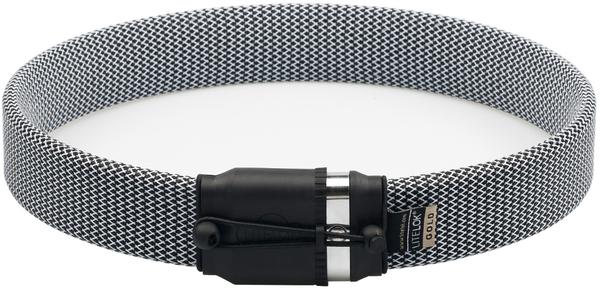
Breakfast
If you’re not used to exercising in the morning then be prepared for your appetite to skyrocket. Bring a good breakfast (or two – second breakfast is not just for Hobbits) and keep yourself stocked up with snacks for the rest of the workday! Overnight oats are easily portable and a good source of slow release energy, great with peanut butter and berries.
Clothes and cleaning
Workplaces well equipped with lockers and showers make this bit easy, as there’s no need to be carrying stuff back and forth or forgetting things! If you don’t have adequate facilities then dry shampoo, baby wipes and deodorant are perfectly adequate, especially if you’re riding at a more leisurely (read, less sweaty) pace. Opt for items that don’t crumple; I’ve found packing my bag much easier if they’re rolled up instead of folded.
Other pearls of wisdom
- Because there will be days where you WILL forget your underwear / shoes / entire outfit, no matter how organised you think you are, leave a spare of anything essential at work.
- I get paid to cycle to work. Well, sort of. The IFTTT app transfers a set amount of money into a savings pot on my Monzo account for every ride I log on Strava. Some days it’s that little boost of motivation I need and it’s a challenge to see what amount I’ve ‘earned’ each month.
- Take the scenic route. Using a platform like Cyclestreets.net to plot your route allows you to compare options. The best route for you might not be the shortest as the crow flies but if there’s less traffic and more dedicated cycle space, it’s probably going to be a more pleasant and safer experience. Then test run your route at the weekend or at a quieter time of the day to get a feel for it.
- Learn simple bike maintenance like how to repair a broken chain or a puncture.
- Don’t be hard on yourself. Whatever your reason for commuting by bike, there’s always going to be a day where you just don’t want to. And that’s fine. Even one journey a week is better than none after all.
We don’t just cater to racers. We provide an “essentials” version of our Bicycle Insurance which includes liability, theft, and accidental damage cover, specifically aimed at commuters.
It only takes a few seconds to get an online quote. Find out how much it would cost to protect your bikes today.